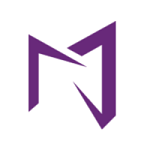
If you’ve resolved to be a better project manager and are looking to improve your project success rate this new year, you’ve come to the right place. Since you’re chasing project success and won’t settle for ‘just fine,’ you want to manage requirements the right way. Let us talk about requirements management for 2020, the best requirements management tools for 2020, and how you can adopt one.
The popularity of requirement management tools is gradually increasing, and there are now a handful of tools that can be called competent. The last year saw some newcomers that are absolutely efficient and are slated to grow in popularity in 2020. Along with some of the classics that can not be left out, we’re listing a few new ones to look out for in 2020.
Best Requirements Management Tools
1. Xebrio

Xebrio is a complete requirements management tool that allows thorough stakeholder collaboration and versioning. It has a foolproof change tracking and management process that makes it stand apart. You can involve all stakeholders to capture and freeze requirements through review and approval, track every change visually through a carefully designed process, categorize and prioritize requirements, link them to milestones, tasks, and test cases, manage your project’s risks, and gain end-to-end requirement traceability. It is a complete project management ecosystem where you get a task management system, comprehensive communication and collaboration system, a bug and issue tracker, software release and deployment capabilities, along with support for milestone-oriented delivery & data visualization, reporting, and insights as well.
Price: Made available by the vendor on request.
2. IBM’s Rational DOORS

Rational DOORS is a feature-rich requirements management software. It allows users to author, verify, and validate requirements. It guarantees requirement traceability, enables risk analysis, and has excellent reporting capabilities along with a real-time dashboard too. All in all, this is a solid requirements management tool that is highly configurable and eases the requirements management process.
Price: $820.00 per month, per user.
3. Micro Focus’s Caliber

Made by Micro Focus, Caliber is a highly visual requirements management tool. It delivers on its promise traceability, provides requirements and impacts analysis tools, storyboards, and simulation scenarios that allow you to test rules and workflow processes as well. Caliber’s most attractive feature is the ability to collaborate with a process of review and approval.
Price: $150.00 per month, per user.
4. Modern Requirements

Modern Requirements is a top-rated requirements management software. It is built directly into Microsoft’s Azure DevOps and enables the creation, automation, management, analysis, and reporting requirements for your Azure DevOps project. It provides an amazingly collaborative environment for working on requirements. Modern Requirements even sports a delightful AI-inspired BA Assistant- Alice. Users can visualize data as diagrams, mockups, or use cases.
You can also reuse requirements. Along with requirements management, it also comes with planning boards, task management, and customizable dashboards.
Price: Made available by the vendor on request.
5. Osseno’s ReqSuite

ReqSuite is a great tool to look at. The design is aesthetically pleasing, intuitive, and user-friendly. It does not overwhelm the user at all, and it shows that much thought has gone into making the user experience top-notch. But the merits of this newcomer are not limited to just that, because ReqSuite has a great feature set that includes requirements visualization, traceability, and real-time impact analysis, collaboration and review, and also integrates with other popular tools. ReqSuite also provides excellent support, just the right amount of friendly and professional.
Price: $194/month.
6. ReQtest

ReQtest is very well suited for agile requirements management. It has an Agile Board for tracking requirements. ReQtest allows users to attach design documents, mockups, and other files to requirements and track those tasks as well. But the best thing about ReQtest is that it allows you to connect requirements to tests and bugs, too, thus granting you traceability. Also, you can filter & visualize data in a bar or pie chart. ReQtest is very affordable too.
Price: $10 user per month for small teams and $45/user per month for large teams.
7. Helix

Perforce’s Helix RM lets you extract, author, analyze, and prioritize requirements. Plus, it also enables you to identify the condition of individual requirements within the approval process, review requirements, stay up-to-date with changes, and collaborate with stakeholders and clients as well. Helix RM’s best feature is the ability to reuse requirements – you can reuse requirements for other projects and link requirements to other requirements, test cases & results, or source code. This makes sure that the team does not lose track of requirements, and it has forward as well as backward traceability. Impressively enough, Helix’s RM offers great graphical visualizations that help users grasp insights efficiently.
Price: Made available by the vendor upon request.
8. Jama Software(Connect)

Jama Connect is very easy to learn, they have excellent customer support, and it provides high-level customization. Of course, it does its core job well, too –– enabling users to capture requirements, connect with stakeholders, and communicate changes to requirements. It is as good as Rational DOORS but much cheaper. Jama’s Review Center allows you to monitor work, get approval on requirement gathering, and review conversations and feedback too. You can integrate with third-party apps such as Jira, GitHub, Rally, and also requirement management or ALM tools like Perforce and MicroFocus. UI and reporting capabilities have room for improvement.
Price: Made available by the vendor upon request
-
How to adopt the requirements management tool that you’ve chosen?
Selecting a tool to use for requirements management is not all. You cannot stop at just that. You may have selected a tool, and you may feel like you’ve conquered this challenge. But, you are less than halfway there unless your team successfully adopts the new requirements management tools, and chances of failure still exist.
-
Why do some requirements management tools fail to bring change?
There are various reasons why tools fail, depending on the unique challenges your organization presents, the user set, and other constraints. But most of the times, it is the following,
-
The complexity of the tool
The tool proves to be too complex for the team to adapt to. The learning curve is quite steep, and using it every day is a pain. It impedes the regular, smooth functioning of the team and does more harm than good.
How to solve this problem?
This is the most common problem that project teams face. Good requirements management tools come with excellent support facilities. You should contact support and arrange for demos or seek customized help that will ease your team into adopting the tool for regular use. You can also help by making how-to-guides that your team will be able to understand, conduct short training sessions, or assign fun, dummy tasks for the purpose of testing the tool.
-
Lack of clear objectives for purchasing the tool
The team is not clear or does not spend enough time and effort to detail the goals and expectations from the tool; as a result, the tool does not satisfy all the needs of the organization after purchase and becomes shelfware.
How to solve this problem?
Identify and thoroughly document where lie the pitfalls, what processes you want to improve, what methodology suits your project the best, and what challenges you need to overcome. Conduct an audit. This way, when the goals and objectives are set, it is easier just to check whether these specific expectations are met or not.
The requirements tool has “hidden” fees and turns expensive to maintain and keep using. Software pricing ‘gotchas’ are hard to deal with; you cannot help but feel like you have been cheated. These hidden costs can crop up as anything – implementation costs, add ons, training costs, etc.
How to deal with this problem?
The only way to deal with this problem is to make the best use of it up until the current payment cycle ends and then switch to an app that does not have any hidden costs. Before you let go of that app, make sure that you have been charged fairly. You can also contact the support executives and voice your concerns. Secondly, be sure that the data that you shared with the tool is safe and private. To be absolutely sure, always read the fine print, or get it checked by experts. When you look for a replacement tool, pay attention to small details, especially while signing up for trials. See if there is a free plan, study its limitations, see if there are any special discounts that could apply to you, and only then make an investment decision.
Steps to adopt the Requirement Management Tool
To quote Harvard sociologist Paul Lawrence,
“What employees resist is usually not technical change but social change — the change in their human relationships that generally accompanies technical change.”
The following steps represent a rough outline of the steps you can take to ensure that your team not only uses the tool regularly, but also enjoys using it, and improves team productivity.
1. Let your team know in advance that you’re looking to make a change in the requirements management process.
This will give your team some time to process the change mentally. Talk to your team about the proposed change openly, provide reasons as to why the change is imperative. Help them set goals by sharing your vision. Give your team enough time to expect change.
2. Ask your teammates for suggestions.
Let choosing a requirements management tool be a democratic process. After all, if your team is the one that will be using the tool regularly, it needs to be one that is well-liked by them. Plus, you’re bound to make a better choice with the team’s collective expertise and know-how. If the team believes that it is a part of the selection process, they will have a more positive, accommodating approach about it.
3. Be sure to ask for support.
Contact the vendor’s support, get your team an adequate number of demos, and ensure that help is available if your team needs it. Take advantage of the provisions the vendor is willing to make for the users. This will guarantee a smooth adoption process.
4. Teach the team, learn from the team.
Conduct formal as well as informal training and question-answer sessions for your team. Ask them questions, answer their questions, and figure out the best practices, easy shortcuts, and tricks of the tools together.
5. Be open to new rules and conventions.
Up until now, you may have had fixed ways of working and a definitive set of standards and a fixed sequence of actions –– a protocol that you have set. But new software will introduce new, more inorganic ways of working, and for good. It is good to expect old protocol being broken, and new rules being set. Just like the team, you may feel like you’re overwhelmed, but you must keep faith in the tool that you’ve so painstakingly selected and soldier on. Rest assured and let it sit for a while; everyone will find their way around the tool and make the new way of working their own. In the meanwhile, talk to as many users as you can, and see if they really like it, whether it is really improving the requirement management process or it is still just chaos and confusion. If this is the case, maybe you need to change the tool you use, reassess the expectations you’ve set of the tool, and look for another tool.
If you’ve been through all of these steps, you will have a fantastic new tool that works for you and helps you deliver successful projects.
Requirement Management in 2020 – An overview
In conclusion, requirements management is evolving, and its importance is only exponentially growing with more complex projects. Likewise, the number and complexity of requirements management tools are also increasing. Making a choice will get increasingly difficult, but you can always refer to this blog and, more importantly, test different tools before investing in them. If a new tool that sounds like it could be the next hit, chances are, it is. Keep an eye on the trends, have fun exploring!
Need Any Technology Assistance? Call Pursho @ 0731-6725516




